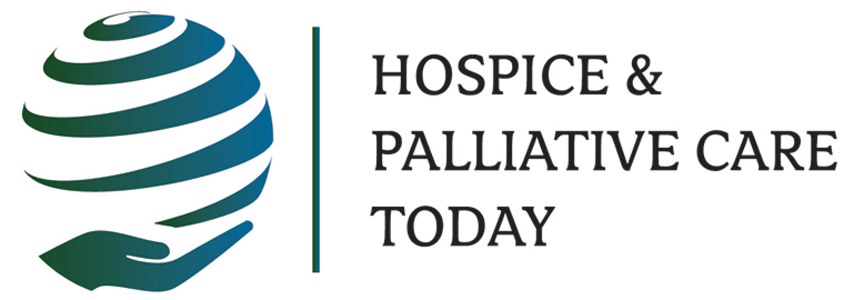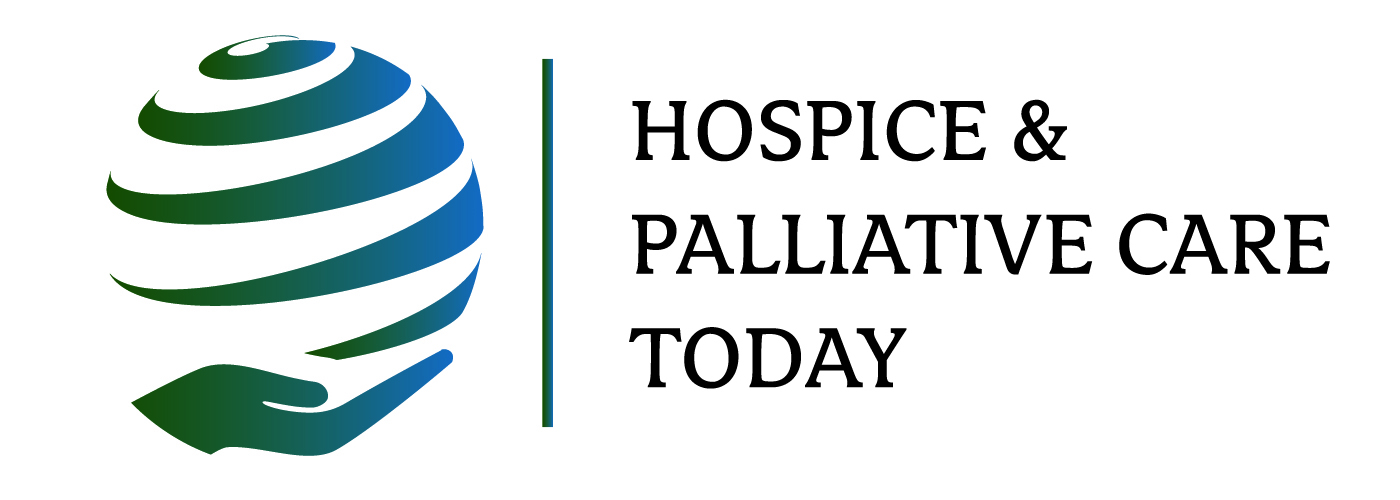Sign up for our free daily newsletters here! Note: subscribers can access our search feature!
Welcome to Hospice & Palliative Care Today, a daily email summarizing numerous topics essential for understanding the current landscape of serious illness and end-of-life care. Teleios Collaborative Network podcasts review Hospice & Palliative Care Today monthly content - click here for these and all TCN Talks podcasts.
3. The grave outlook for hospice family caregivers
4. Community turned-out for 7th annual Hoedown for Hospice in Dickinson
6. Hard decisions: Using legal authority over an aging parent
7. Health equity starts at home: Renewing the heart of nursing
11. New bill would extend Hospital-At-Home Waiver through 2030
Hill Country vigil draws hundreds after deadly Texas floods
MYSA, San Antonio, TX; by Nicholas Hernandez; 7/11/25
... On Thursday, July 10, hundreds gathered downtown for a Candlelight Vigil of Hope to honor those affected [by the "catastophic flood"] and shine a light on the importance of grief and mental health support in the wake of disaster. Organized by River City Advocacy in partnership with Hope Hospice and other local nonprofits, the event brought together counselors, community leaders and families. Handheld candles were distributed at the plaza, where people stood shoulder-to-shoulder in silence, prayer and remembrance. ... "If there’s one thing that New Braunfels knows, it’s how to gather and how to support each other, especially in times of flooding and tragedy," said Heather Harrison, director of development at Hope Hospice and Hope Hospice Foundation.
Editor's Note: Thank you Hope Hospice for your leadership in providing this crucial way to gather and grieve. Calling all hospice leaders to simply "check in" on employees who have family and friends in affected areas when such crises occur. Other recent examples include Hurricanes Helene & Milton, the Los Angeles wildfires, Kentucky floods, and these Texas / New Mexico floods. Your kind, timely words can make a lasting difference.
Connecticut Hospice back on sound financial footing; many credit local business owner Barbara Pearce for turnaround
CTPost, Branford, CT; by Mark Zaretsky; 7/12/25
Connecticut Hospice, the nation's first hospice facility, appears to finally be out of the financial woods now — but that wasn't the case a few years ago. And many people outside its inner circle may not know just how precarious its situation was and how a well-known business owner played a key role in the turnaround. Barbara Pearce, CEO of Pearce Real Estate, put her life and her role in the real estate company her late father founded on hold for six years to take over at Hospice and make hard decisions to steer it back to health. Hospice has new leadership now. New President and CEO Sylvia Allais is working to move Connecticut Hospice forward.
The grave outlook for hospice family caregivers
Hospice News; by Holly Vossel; 7/10/25
The state of family caregiving in the United States has reached a critical tipping point amid rising demand for end-of-life care and insufficient resources. Many family caregivers are ill-equipped to navigate the complexities of supporting a loved one with a terminal illness, according to Dr. Arul Thangavel, CEO of the advance care planning company WiserCare. Thangavel is also an attending physician at the University of California, San Francisco (UCSF). Among the issues is that conversations about the end of life and goals of care are often brought up far too late in a disease trajectory, Thangavel said. This trend leaves families grappling with uncertainty, moral distress, guilt and compounded grief in the decision-making process, he stated.
 |
Community turned-out for 7th annual Hoedown for Hospice in Dickinson
The Dickinson Press, Dickinson, ND; by Press Staff; 7/11/25
The spirit of community and compassion was on full display June 19 as families, friends and neighbors gathered at Veterans Memorial Park for the 7th Annual Hoedown for Hospice. This beloved fundraising event benefits the Dickinson hospice program offered through CHI Health at Home.A crowd of all ages turned out, making the event a resounding success. Attendees enjoyed a lunchtime filled with activities and entertainment. Children laughed and played in colorful bouncy houses, met furry new friends at the petting zoo, and everyone enjoyed delicious food and ice cream.
Grieving the living: How Hospice of St. Lawrence Valley helps caregivers cope
North Country Now, St. Lawrence County, NY; by Kate Favaro, Hospice of St. Lawrence Valley; 7/10/25
With caregiving comes grief, there’s no way around it. You will grieve two important things that you’ve lost: who the person you’re caring for used to be, and the things that will never be. Take the time to explore the grief you’re experiencing so you can provide the best care possible. If you’re not taking care of yourself, you won’t be able to take care of anyone else. Hospice of St. Lawrence Valley offers the following on the grief of caregiving:
- You will grieve someone who is still here physically. This is especially true if the person has a condition which impacts their brain and personality. ...
- Allow yourself to identify what exactly it is you miss about the person. Did they used to love to fish but can no longer hold a rod and reel steady? ...
- You will grieve what will never be. Seeing the future change as the person you’re caregiving for declines is a very real loss. ...
Editor's Note: Thank you Kate and Hospice of St. Lawrence Valley! You got this grief care right, when too many hospices miss the mark by communicating that (1) grief care occurs after the death, and/or (2) that anticipatory grief is simply fearing what will happen after the death. The CMS Conditions of Participation - Hospice § 418.3 defines: "Bereavement counseling means emotional, psychosocial, and spiritual support and services provided before and after the death of the patient to assist with issues related to grief, loss, and adjustment." All hospice interdisciplinary team members model basic loss, grief, and coping skills with patients, caregivers and families. Are their skills great or misguided? Click here for an educational/support video for caregivers and families on "Anticipatory Grief," used by helathcare organizations nationwide. (Disclosure, provided by Composing Life Out of Loss, a sponsor of this newsletter.)
Hard decisions: Using legal authority over an aging parent
Forbes; by Carolyn Rosenblatt; 7/9/25
The phone call came to Dad’s daughter (FD) at 6 AM. Again. This time, it was the night [home] caregiver reporting that her father had fallen while trying to get out of bed. She had jumped up and tried to stop him but she could only get to him in time to break his fall. ... For months, FD had watched her father's condition deteriorate from 300 miles away, visiting as often as she could. Advanced dementia had robbed Dad of his independence, and multiple physical ailments had left him requiring round-the-clock care. He was on hospice care, ... FD [daughter and legal authority] felt compelled to make a decision about moving Dad [from home to a facility]. ...
- The Daughter's Legal Authority ...
- Navigating Family Conflict ...
- Hospice Care-Could It Continue? ...
- The Strategy of How to Time the Move ...
- The Takeaways ...
Editor's Note: This is a common scenario, especially with the daughter living 300 miles away, family conflict, and more.
 |
Health equity starts at home: Renewing the heart of nursing
Minority Nurse; by Michelle Cortez Adams; 7/10/25
... I started my nursing career in the ICU, told (as many of us are) that hospital experience was a must. And while the work was meaningful, it wasn’t fulfilling. My patients were often unconscious. My goal was to stabilize and transfer them. I never got to know their stories, their families, or whether they ever found healing beyond discharge. That changed when I moved into home hospice and then home health care. This shift taught me that home nursing is not only a career path—it’s a calling. I saw the impact of my work every day. I helped clients reach personal goals, not just clinical benchmarks. I was welcomed into their lives by name. I wasn’t just preserving life—I was restoring it. Home health care reminded me why I became a nurse in the first place: to form real connections, to bring comfort and dignity, and to care for the whole person—body, mind, and spirit.
'One Big Beautiful Bill Act': Key final Medicaid changes explained
Morgan Lewis; by Jeanna Palmer Gunville and Tesch Leigh West; 7/9/25
The One Big Beautiful Bill Act was signed into law on July 4 and includes significant changes to the Medicaid program, particularly with regard to state and federal financing for the program. This LawFlash provides a high-level summary of certain key provisions that will impact various Medicaid stakeholders, including states, providers, and enrollees. ...
- Impact On Federal Financing ...
- Impact On States ...
- Impact On Providers ...
- Impact On Enrollees ...
VA announces expanded burial benefits for those under VA-provided hospice care
Tri-State Alert; by Staff Report; 7/11/25
The Department of Veterans Affairs announced today it has temporarily expanded burial benefits for certain Veterans, per the Senator Elizabeth Dole 21st Century Veterans Healthcare and Benefits Improvement Act. The new law specifies eligible Veterans are those who are discharged from VA-provided medical or nursing care to receive VA-provided hospice care at their home and who pass away between July 1, 2025, and Oct. 1, 2026. Previously, Veterans who died at home under VA hospice care after discharge from VA-provided medical or nursing care were not always eligible for a full VA burial allowance. The Dole Act addresses that gap.
 |
100 great community hospitals | 2025
Becker's Hospital Review; by Anna Falvey; 7/11/25
Becker’s is pleased to release the 2025 edition of its “Great community hospitals” list. Community hospitals play a vital role in the fabric of the U.S. healthcare system, delivering accessible, affordable care to patients beyond major metropolitan areas. Whether serving rural regions or suburban neighborhoods, these hospitals are essential to keeping communities healthy and connected to quality care. The community hospitals recognized on this list are dedicated to clinical excellence, academic advancement and personalized, whole-person care delivery. Their mission is to elevate health outcomes within the communities they serve.
New bill would extend Hospital-At-Home Waiver through 2030
Home Health Care News; by Morgan Gonzales; 7/10/25
On Thursday, a bipartisan group of lawmakers introduced legislation to extend the hospital-at-home waiver, which has been a source of significant uncertainty for the home health industry. The Hospital Inpatient Services Modernization Act, if passed, would allow hospitals to extend successful hospital-at-home programs for an additional five years. It would also orchestrate a study focusing on the efficacy, quality and patient satisfaction associated with home-based care.
 |
The Fine Print:
Paywalls: Some links may take readers to articles that either require registration or are behind a paywall. Disclaimer: Hospice & Palliative Care Today provides brief summaries of news stories of interest to hospice, palliative, and end-of-life care professionals (typically taken directly from the source article). Hospice & Palliative Care Today is not responsible or liable for the validity or reliability of information in these articles and directs the reader to authors of the source articles for questions or comments. Additionally, Dr. Cordt Kassner, Publisher, and Dr. Joy Berger, Editor in Chief, welcome your feedback regarding content of Hospice & Palliative Care Today. Unsubscribe: Hospice & Palliative Care Today is a free subscription email. If you believe you have received this email in error, or if you no longer wish to receive Hospice & Palliative Care Today, please unsubscribe here or reply to this email with the message “Unsubscribe”. Thank you.


